Editor’s Note: This piece was a finalist in the Pulse writing contest, “On Being Different.”
Visual imagination is like a superpower or a sixth sense: We take it for granted. On demand, we conjure up images of those we hold most dear: family, friends, our beloved pets. We envision people, places and things that we’d like to experience in the future. We revisit cherished memories simply by picturing them, essentially reliving them, all in our mind’s eye.
That is, unless you have aphantasia—like me.
Aphantasia is the inability to visualize, a rare trait shared by roughly 3 percent of the world’s population. We call ourselves aphants.
Throughout childhood and into adulthood, when asked to imagine, picture or visualize something, I always thought the request was meant metaphorically. And in job interviews, when asked, “Where do you see yourself in five years?” I didn’t realize that this was intended literally—that I was meant to actually see myself doing something, somewhere at some time in the future. I simply didn’t understand that my imagination was blind.
In 2006, Rhonda Byrne’s self-help book The Secret came out. It was a global sensation that spoke to how positivity and mindset, coupled with the power of visualization, can invoke the law of attraction to manifest our deepest desires.
I had the positivity and mindset part in the bag, but the visualization—well, that was another matter. After speaking to colleagues and friends who were also exploring The Secret, a light bulb went on: Could it be that people actually “see” images in their minds? Like, literally?
I was forty-two when I had this revelation—and I kept it to myself, like a dirty little secret. Clearly, my inability to see pictures in my mind put me in the minority, and I felt unwilling to expose it. It was weird. Weird is different. Nobody likes different.
But aphantasia is an inability, not a disability. So I went on with my life much as I had before. Nothing of importance changed. I couldn’t visualize. So what?
Fast forward to early 2021, when, in trying to holistically reduce my stress levels, I began exploring meditation.
Most aphants will say that they find guided visual meditation nearly impossible, because it starts with something like: “Relax and picture yourself <enter calming scene here>.”
As soon as the words “picture yourself” are uttered, the aphant is lost. I was lost. Every time I tried visual meditation (believing that this was the only kind of meditation), I found it frustrating and demoralizing.
In one session with a meditation specialist, I surprised both the practitioner and myself by blurting out, emotionally:
“I can’t visualize, okay? I can’t picture myself anywhere doing or looking at anything, okay? I just can’t!”
“Oh,” the practitioner responded calmly. “You have aphantasia.”
Three simple words. Just like that. You have aphantasia.
I was stunned. My mind-blindness had a name?
“I have w-what?” I stammered.
“Aphantasia,” she said again. “It means you can’t visualize. It affects a tiny proportion of the population. But that’s okay. We’ll try a different approach.”
And that was it. I have aphantasia. It’s a thing. I’m not weird, after all.
I started to cry, and before I could stop myself, all of this toxic self-loathing that I had no idea I’d been harboring spilled out: feelings of inadequacy, failure, exclusion and even shame. I recounted an incident at a work function where my team was asked to solve a three-dimensional puzzle. While my colleagues busily suggested this or that, I froze. I simply couldn’t conceptualize what was being asked, let alone help to solve the puzzle. I crawled into myself, ashamed of my inability to see what they saw, excluded from their collaboration. I hemmed and hawed, brow furrowed, as if I had something to contribute. I didn’t. I perceived myself as a failure: Something’s wrong with me. Why can’t I do this?
The poor woman got more than she bargained for that day. She was gracious and supportive, though, and taught me other ways to meditate that didn’t involve using my mind’s eye. More importantly, this woman, whom I’d never seen before and have never seen since, changed my life.
Immediately, I scoured the internet for the word aphantasia and came upon several studies, an aphantasia website and, most importantly, people just like me. I devoured the information that helped to explain the ways in which having aphantasia has likely impacted my life; some obvious, some subliminal.
For instance, I can’t picture my loved ones’ faces. I can never remember where I parked my car. Memorization and mathematics were very difficult in school. They still are. Spacial concepts are tricky. I can’t remember the books I’ve read. I can’t recall geographical landmarks, and driving without specific directions is problematic.
The list goes on. I learned that other aphants have similar unconventionalities, though it’s not a written rule.
My husband, a hypervisualizer, was as shocked as I. After nearly forty years together, it was just not something we’d ever asked each other about, as in:
Me: “Hey, so, can you picture a red apple? Like actually see it in your mind?”
Him: “Sure, can’t you?”
It just never came up.
I’d assumed that he visualized things metaphorically, like I did, and he’d assumed that I visualized things in infinite detail, like he did. Discovering his ability wowed me, just as discovering my inability baffled him.
“But wait,” he started. “You love reading. How can you possibly enjoy it without being able to visualize the unfolding story? And you write fiction. How can you write stories and imagine all those scenes in your head without visualizing them? ”
Fair questions—ones I really had to consider.
I had my first aha moment, as I call it, about reading. How could I enjoy reading so much, if I couldn’t visualize? Long descriptions of scenery, what people wear and how they look bore me. I skim the content for the bare minimum and move on. She was twenty, in the forest, and it was dark. That’s all I need. My brain considers the rest to be extraneous detail, window dressing. I’m all about the meat of the story—the action, how people feel, relationships, conflict and so on.
As for fiction writing, I didn’t realize how big a role a visual imagination can play in the creative process. I simply write what I know, perceive and feel, without the visual component. For instance, I know what a car crash looks, sounds and feels like, so I can write about the experience, adding the window dressing as I go.
The meditation practitioner adopted a different approach with me; and my brain has done so, too, since birth. My brain has unconsciously devised strategies to bridge the gaps left by aphantasia. I learned and continue to learn. I thrived and continue to thrive. I’m curious and creative. I write imaginative stories, bending my capabilities in imaginative ways.
All of which raises two questions: What is “normal,” anyway? And what is “different”?
I’m right-handed, an attribute shared by more than three-quarters of the world’s population. I am in the majority. In this, I am normal.
I have green eyes, a physical characteristic deemed rare, since only 2 percent of humans have it. In this, I’m in the minority. I am different.
I can’t see pictures in my head. I have aphantasia. It’s more common than having green eyes, but far less so than being right-handed.
In this, I am not normal or different; I’m neurodivergent.
I am just me.

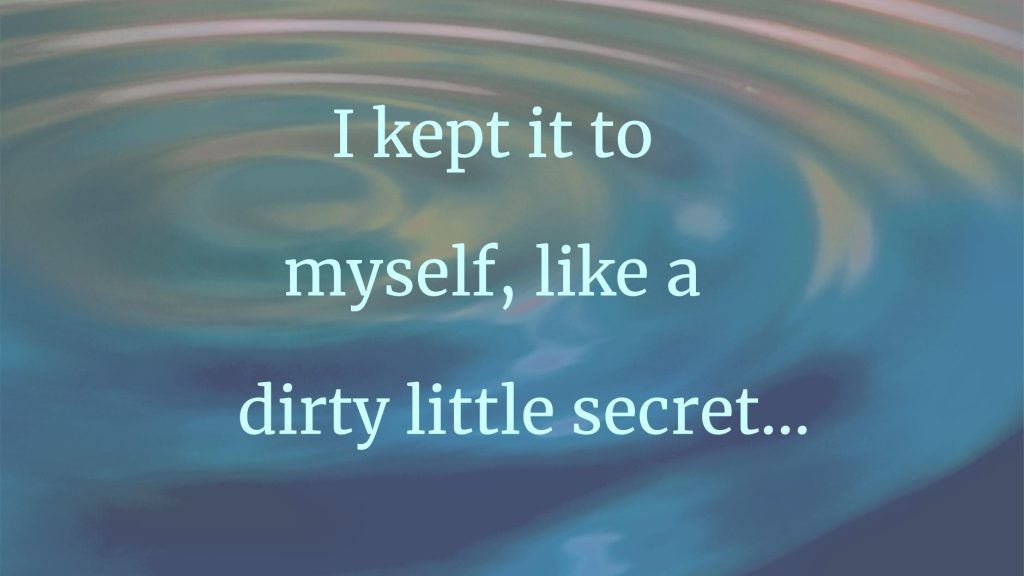
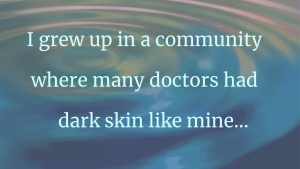
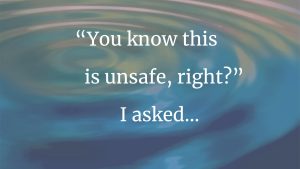
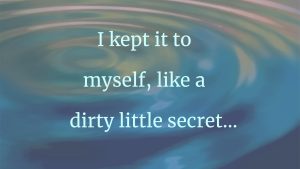
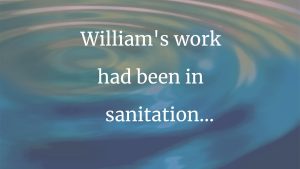

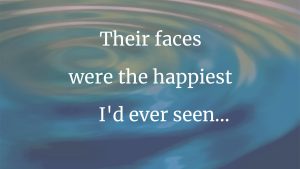

11 thoughts on “I Can’t See Pictures in My Head”
Dear Liana,
Thank you so much for sharihg your story. Amazingly (to me, anyway) it turns out that I too have aphantasia, I too didn’t know that I was different, had never heard of it, and only discovered it reading Pulse. I beat you by a bit – I’m 69. It happens that I have green eyes too, making me quite a rare creature. I am happy to say that finding out that I am different in this way has provided lots of interesting conversations with friends, and happily, no stress whatsoever, since I was never aware that anything was missing.
Hi Shari. You have aphantasia and green eyes!! Wow! Kindreds Aphants experience a myriad of reactions to learning they’re aphants. One of my siblings was devastated, like he was lacking, somehow. Another of my siblings merely shrugged; much like you he felt no stress. If you’re interested, you can read about it in my blog article entitled Is Aphantasia Hereditary? – A Personal Exploration
https://lianamscott.com/2021/12/05/is-aphantasia-hereditary-personal-study/
Thanks for taking the time to comment.
Your story definitely educated me. Thank you for making me aware of this subject and, more importantly, for reminding me that we are each unique people with our own characteristics, challenges, and coping skills. I wish you well
Hi Ronna. I’m glad that my story is informing people about the existence of aphantasia. We definitely are all unique. In fact, are any of us really neurotypical, as they say? Thanks for your comment.
I had never heard of this. Thanks for educating me. I wonder how many other people keep this secret to themselves.
Hi Pris. You’re welcome! So many don’t know about aphantasia, aphants included. The term “aphantasia” itself was only coined in 2015, although the phenomenon is as old as humankind, I suspect. Thanks for reading my story.
Differences in perception explain so many things. I’ve just learned that aphants sometimes also have synaesthesia, which seems utterly contradictory. Thanks for this fascinating story!
Hi J. Differences in perception absolutely explain so many things. We’re really just scratching the surface of what has been studied, discovered, and explained. I don’t personally experience synaesthesia (when you experience one of your senses through another, ie. smelling colours), but yes, it does seem contradictory for those who do. Having said that, I dream in technicolor! Full motion, 3D dreams, and yet I can conjure an image in an awake state if my life depended on it. Thanks for reading my story.
What do aphants see when they dream?
I have aphantasia, and that’s a hard question to answer largely because the way I experience the world and my dreams isn’t about visualizing/seeing. I just experience my dreams. I suppose I’m seeing in my dreams like I see in waking life, but my memories of them when I wake aren’t images, they’re just the experiences. I know what happened, I know what I felt, etc.
Hi Kerry. As I mentioned in my response to J’s comment, I dream in technicolor. Full motion, 3D dreams. But Jessie, a fellow aphant (hi Jessie!) who also responded to your comment, describes the memory of said dreams well. I don’t re-see them. I can describe them in detail, but I can’t “see” them in the retelling. The same is true for any of my life’s memories, those that I retain. Thanks for reading my story.